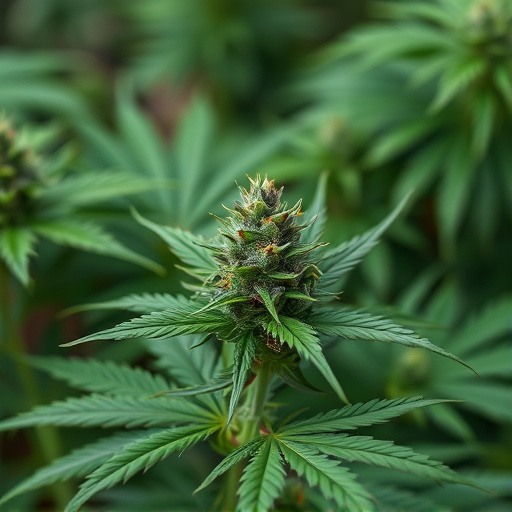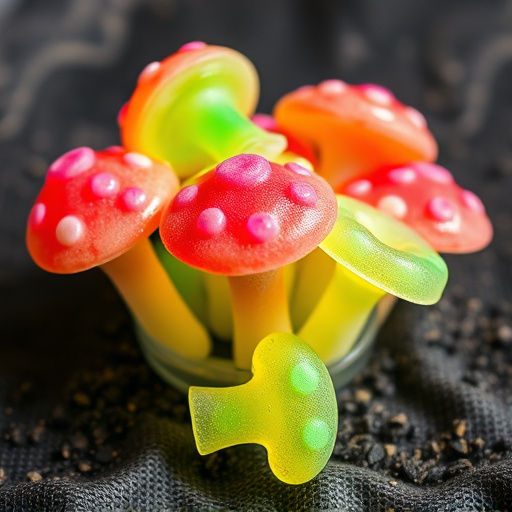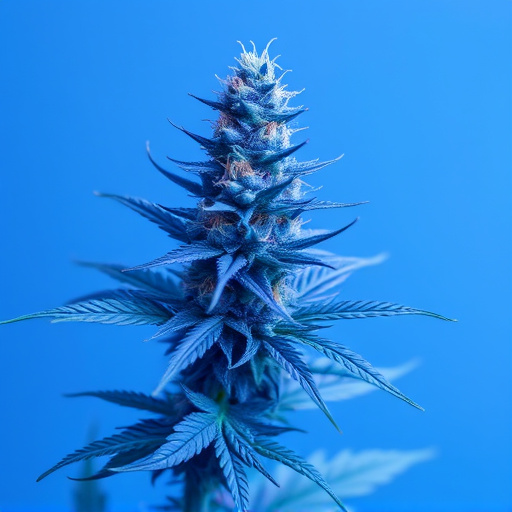Cannabis, particularly specific strains rich in CBD and certain terpenes, shows promise as a natural remedy for migraines by interacting with dopamine and serotonin neurotransmitters. These compounds modulate pain signals, reduce inflammation, and influence neurotransmitter release, offering potential relief. While cannabis strains tailored for migraines show significant potential, further research is needed to fully understand their mechanisms of action.
Unraveling the relationship between cannabis, dopamine, and serotonin offers a glimmer of hope in migraine management. This article delves into the intricate dance of neurotransmitters, focusing on how cannabis interacts with dopamine and serotonin to potentially alleviate migraine pain. By exploring specific cannabis strains known for their targeted modulation of these neurotransmitters, we uncover innovative approaches that may revolutionize migraine treatment. Dive into this comprehensive guide to discover the science behind effective cannabis strains for migraines.
- Understanding Dopamine and Serotonin: The Neurotransmitters in Migraine Management
- Cannabis and Its Impact on Brain Chemistry: A Closer Look at Dopamine and Serotonin
- Cannabis Strains for Migraines: Exploring the Science Behind Targeted Neurotransmitter Modulation
Understanding Dopamine and Serotonin: The Neurotransmitters in Migraine Management

Dopamine and serotonin are key neurotransmitters—chemical messengers in your brain—that play a significant role in various bodily functions, including mood, motivation, pleasure, and pain perception. Imbalances or disruptions in these neurotransmitters have been linked to conditions like depression and migraine headaches. Migraines, characterized by intense throbbing pain, often trigger severe discomfort, nausea, and sensitivity to light and sound.
Cannabis, particularly certain strains, has gained attention for its potential to interact with dopamine and serotonin receptors, offering a possible natural remedy for migraines. Some cannabis compounds, such as tetrahydrocannabinol (THC) and cannabidiol (CBD), may help reduce inflammation, modulate pain signals, and even influence neurotransmitter release, potentially providing relief for migraine sufferers. Research suggests that specific cannabis strains for migraines could be an effective alternative or adjunctive treatment, but further studies are needed to fully understand their mechanisms of action.
Cannabis and Its Impact on Brain Chemistry: A Closer Look at Dopamine and Serotonin

Cannabis has a complex relationship with the brain’s chemistry, especially when it comes to neurotransmitters like dopamine and serotonin. These chemicals play a significant role in regulating mood, motivation, pleasure, and pain perception. When cannabis is consumed, its compounds interact with the endocannabinoid system (ECS), which modulates neurotransmitter activity.
The impact of cannabis on dopamine is well-documented. Dopamine release is associated with feelings of pleasure and reward, and certain cannabis strains known for their high THC content can stimulate dopamine release, leading to the euphoric effects many users experience. On the other hand, serotonin, involved in mood regulation and appetite control, is also influenced by cannabis. Some strains, particularly those rich in CBD, have been found to interact with serotonin receptors, potentially offering relief for conditions like anxiety and depression, including migraines. This interaction highlights the potential therapeutic benefits of specific cannabis strains for various neurological and psychological disorders.
Cannabis Strains for Migraines: Exploring the Science Behind Targeted Neurotransmitter Modulation

Cannabis has gained attention for its potential in treating various medical conditions, including migraines. The science behind this lies in its ability to interact with neurotransmitters—specifically dopamine and serotonin—in the brain. Different cannabis strains have unique compositions of cannabinoids, such as THC and CBD, which can modulate these neurotransmitters.
For instance, some strains are known for their high CBD content, which has been shown to reduce inflammation and suppress certain pain signals without triggering a significant psychoactive effect. This makes CBD-rich strains promising candidates for migraines. Additionally, specific terpenes present in cannabis, like linalool and myrcene, further contribute to its therapeutic effects by enhancing the interaction between cannabinoids and neurotransmitters, potentially offering relief from migraine symptoms.
Cannabis has emerged as a potential tool in managing migraines, primarily through its interaction with neurotransmitters like dopamine and serotonin. Understanding how cannabis affects these brain chemicals offers insights into specific strains’ effectiveness in alleviating migraine pain. Further research is needed to explore the science behind targeted neurotransmitter modulation, potentially leading to innovative treatments for this debilitating condition using cannabis strains for migraines.














